Transcription of 2022 - hee.nhs.uk
1 2022. 1. We work with partners to plan, recruit, educate and train the health workforce. Contents Ministerial Foreward Edward Argar MP, Minister of State for Health 3. Foreword Dr Navina Evans, Chief Executive, Health Education England 4. Executive Summary Patrick Mitchell, Director of Innovation, Digital and 5. Transformation, Health Education England 1. Introduction 7. 2. The need, enablers and opportunities for system change 10. 3. Accessibility, diversity and inclusivity of the Blended Learning Programme 12. 4. Current position of the professions and regulation 14. Allied Health Professionals 14. Dentistry 18. Healthcare science 24. Medicine 26. Nursing and midwifery 27. Pharmacy 30. Psychological professions 32. 5. Learning and support technologies 40. 6. Cost and funding 46. 7. Evaluation 46. 8. Recommendations 47.
2 9. Conclusion 48. Acknowledgment 51. References 54. Glossary 57. 2. outcomes and student engagement and experience, to help create a new cadre of skilled and motivated professionals to join our NHS workforce. In line with our commitment to expanding opportunities across the country, the report sets out the potential role of blended learning for those students in England currently unable to access healthcare pre- registration qualifications easily, such as those living in remote, rural or coastal communities. It also highlights the potential of blended learning programmes to allow students to access learning opportunities flexibly to further their career aspirations Ministerial Foreword alongside their work, family and personal commitments. As the Minister of State for Health leading Finally, and building on recent experiences on NHS workforce, it is a privilege to be in the pandemic, the report demonstrates able to support the use of blended learning where and how we can go further with approaches in educating, continuous blended learning with appropriate flexible learning and upskilling of our fantastic NHS.
3 Regulation, targeted investment, and staff. greater use of innovative and emerging technologies. In the time that I've been a minister here at the Department, I'm always struck by the I would like to extend my thanks to Health innovation that colleagues continually bring Education England colleagues and to all forward and embed in their day-to-day those who participated in the development caring roles and ongoing training. I'm of this important report. immensely proud of the work that HEE has been leading to develop innovative I look forward to continuing to take an approaches to training the NHS workforce active role in further discussions with of the future, such as blended learning. I. system partners - to agree a plan on see this ongoing development as vital to implementing the recommendations from ensuring that we fulfil our ambitions for the this report and to continue to promote the NHS workforce, and in a way that works for demonstrable benefits of blended learning that workforce.
4 We have come a long way, for health professional education. but there is so much further we can go. We have seen rapid changes to healthcare delivery and healthcare education in recent years, particularly in response to the pandemic, but also to meet the changing demands and needs of students and patients. This report outlines the potential for blended learning to improve learning Edward Argar MP. Minister of State for Health 3. The emerging reviews of the few commissioned programmes are showing promising benefits in terms of diversity of student population, student satisfaction and more. However, we will continue to evaluate the approach to ensure that it delivers quality healthcare professional education, makes an impact and adds value. Due to the pandemic, the blended learning approach has sparked a great deal of interest and a real need to utilise this approach across all healthcare professional education.
5 This document has been developed through the engagement of system partners with a broad range of expertise, which has helped us to frame the current state of blended learning and the potential it has to inform the delivery of healthcare professional education and training in the future. Foreword Dr We will continue to utilise our expertise within Navina Evans, Chief HEE and the wider system to promote the blended learning agenda, and to facilitate the Executive, Health creation of a significantly different offer in healthcare professional education. This will Education England ultimately support the growth of an adaptive, expert and professional workforce which is The provision of healthcare education has evolved prepared for the demands of 21st century care, rapidly over the past two years, in part as a and I am proud that these programmes will be response to the COVID-19 pandemic.
6 However, here to benefit both our learners and the even before the pandemic, a variety of factors population of England as we look to the future. were driving the need to change, including shortages in the healthcare workforce and issues with widening access, participation and diversity. Also pressing is the need to grow a digitally ready workforce so that we are ready and able to fully utilise current and emerging digital and learning technologies for the benefit of the population. Health Education England (HEE) was mandated in 2019/2020 to promote alternative routes into the nursing profession by establishing a blended learning nursing degree programme, combining digital, face-to-face and practical learning, that maximises the opportunities to provide a fully interactive and innovative programme. 4. however, following the commissioning of the fully integrated blended learning nursing programme, there has been a surge in interest in its use for other healthcare professional education training due to the pandemic.
7 This resulted in HEE gaining support from Care Minister Helen Whately MP to convene a Task and Finish group with regulators and other partners to: explore and understand the drivers and issues in moving the blended learning agenda forward explore good practice from an international perspective explore how changes to regulation may Executive summary - release new opportunities to develop blended learning programmes Patrick Mitchell, Director of Innovation, This report presents the current positions of regulators and key stakeholders with Digital and consideration for how blended learning can promote accessibility, diversity and inclusivity. Transformation, Health There is a focus on how learning and support technologies can be identified and utilised Education England effectively in the delivery of digital and online education.
8 Health Education England (HEE) supports the delivery of excellent healthcare and health It provides the reader with an opportunity to improvement to the patients and public of examine regulatory, technological, accessibility, England; by ensuring that the workforce of today and the future have the right skills, values and diversity and inclusion issues in relation to behaviours at the right time and in the right place investment, development and delivery of blended HEE's work includes planning and commissioning, learning healthcare programmes. workforce redesign and reform in partnership with While some regulators and professional bodies various system partners, regulators, professional have limited or no restrictions to the amount and bodies, councils and others, to ensure that the use of emerging and innovative technologies in healthcare workforce receives the best education the delivery of healthcare education, others have and training to deliver safe, quality and restrictions which we hope will be reviewed in contemporary care.
9 Conjunction with evidence, to release new opportunities for the development of innovative Blended learning approaches have been used in blended learning programmes. varying levels to educate healthcare professionals, 5. There is evidence that blended learning has Recommendations will be made for readers to benefits including, low non-continuation rates, explore contributions to development and better student experience and satisfaction, delivery of high quality blended learning skills development and confidence. healthcare education. This knowledge provides the opportunity to HEE will continue to utilise its internal Technology examine how blended learning approaches can Enhanced Learning (TEL) expertise and be utilised in providing robust and suitable collaborate with key stakeholders, including healthcare professional education in the industry and international partners, to examine the current era.
10 Evidence and identify where changes are required to enable effective use of the approach. The higher education sector has responded flexibly to the COVID-19 pandemic and It will continue to engage closely with key system deployed different teaching and learning partners in responding to challenges to ensure pedagogies considering social distancing that opportunities to utilise blended learning have requirements. More widely, the pandemic has been fully exploited. provided an opportunity for educators, commissioners, and the government to examine the role of increased digital and online education to complement face-to-face and practice learning in developing the future healthcare workforce. Successful delivery of these programmes is not without challenges such as: significant financial investment and resources change in perception of the delivery methods being second rated development of faculty and practice educators to deliver digital and online education an appropriate level of digital literacy skills to allow students to fully engage with education an appropriate level of learner readiness to engage with online/blended delivery investment in the technologies that deliver the right outcomes for students access to the right equipment, software and infrastructure by students from low participation areas, with learning needs or from rural and remote areas strong leadership and a shift in culture 6.



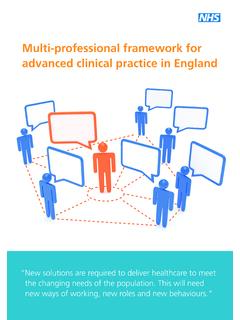
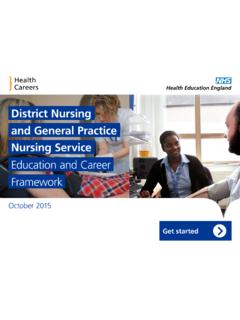
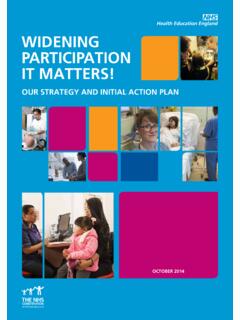

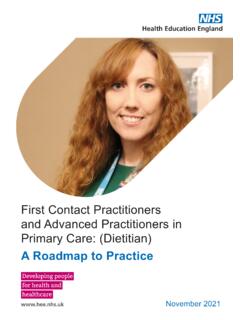
![Midlands [1 of 2] - hee.nhs.uk](/cache/preview/6/c/1/4/2/e/2/7/thumb-6c142e2790d053a442bd8a3e81c79697.jpg)



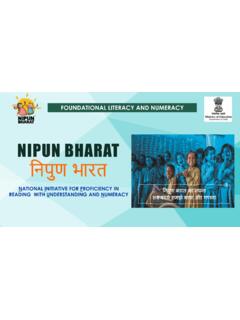
![A NOVEL TEACHER EVALUATION MODEL 1 Commented [AF1]](/cache/preview/e/4/4/2/1/3/c/f/thumb-e44213cf73a7f1d5edae6ca83d79c07d.jpg)